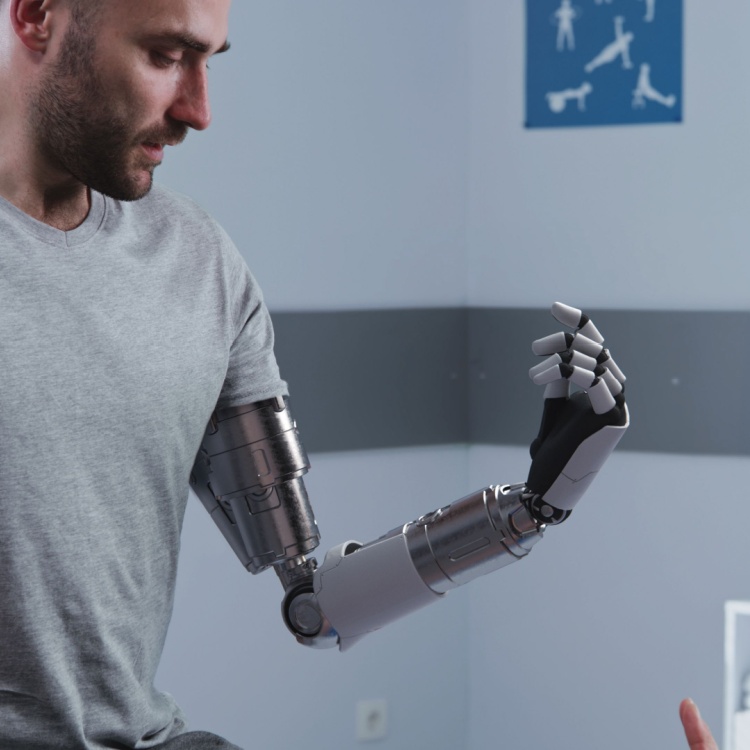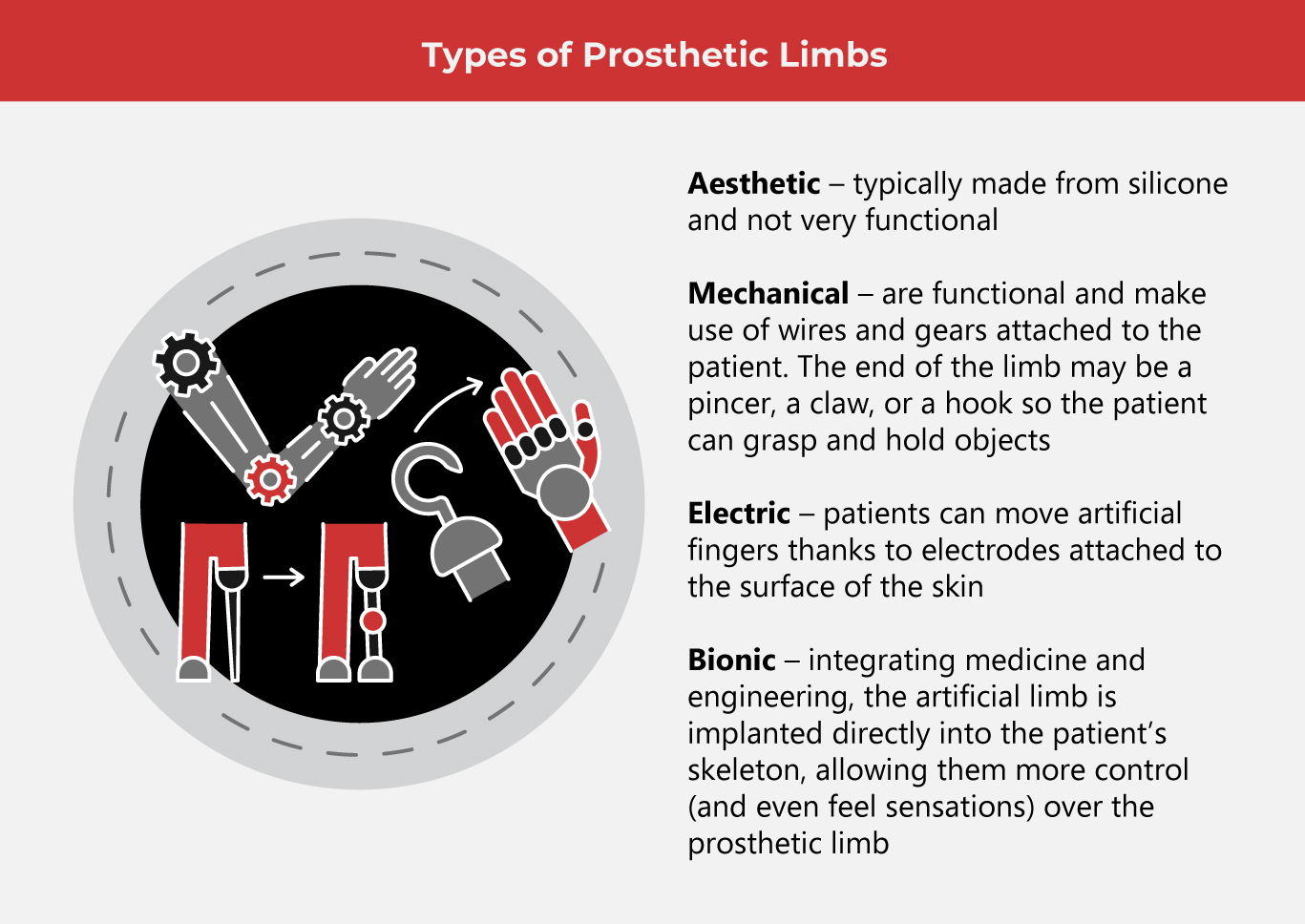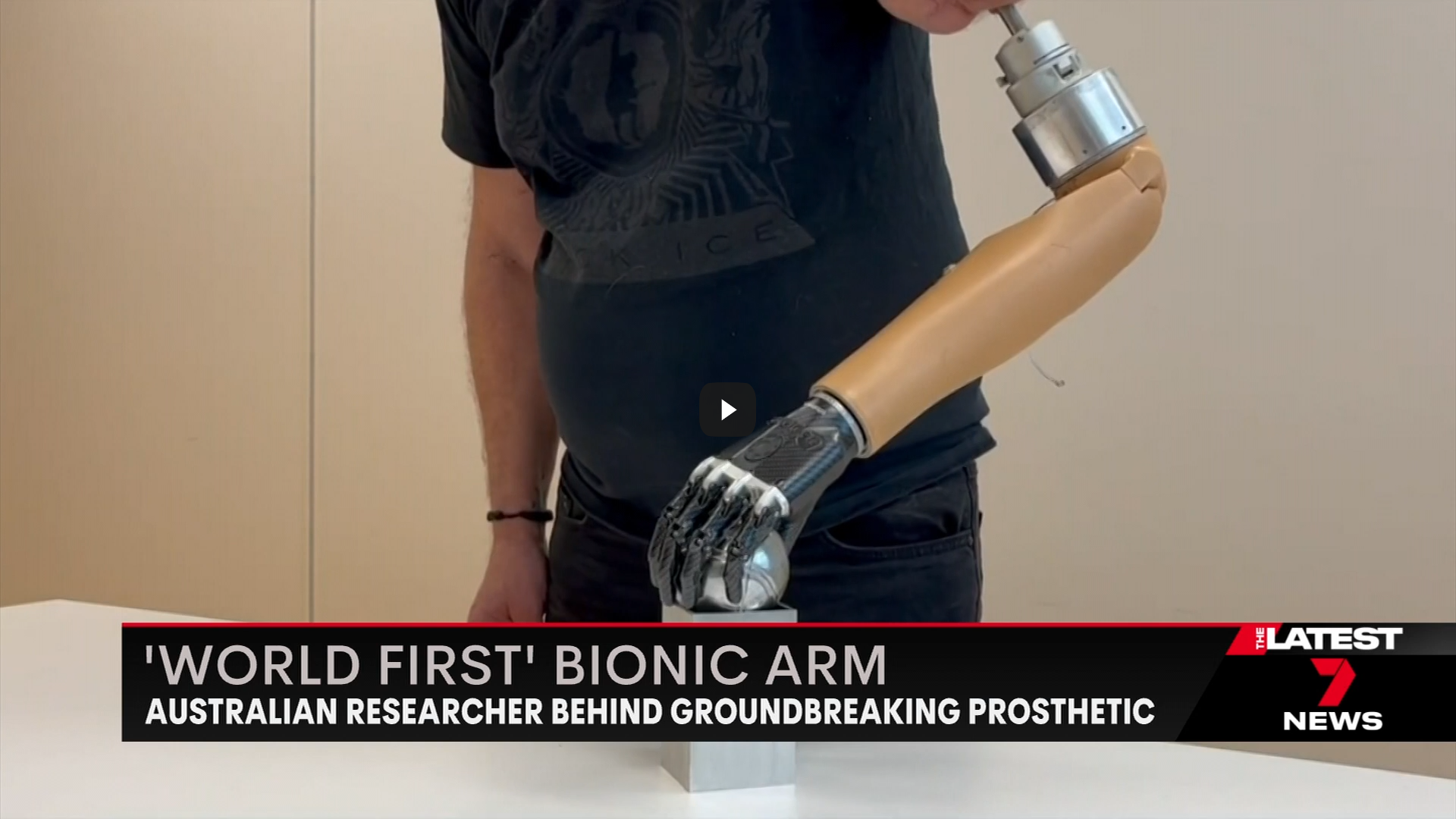The Bionic Arm of the Future

When medicine merges with engineering, it can be life-changing. Add AI and machine learning to the mix, and we get something truly magical.
The primary cause of upper limb amputations in adults is trauma, according to Science Direct. The most common causes are work-related injuries from accidents handling heavy machinery. Vehicular accidents, gunshot wounds, and injuries from combat for those in the military were also cited.
Prosthetics for people with amputations have come a long way from silicone limbs. These were typically unwieldy and were attached mostly for aesthetic purposes more than functional ones. Later on, mechanical prosthetics were created, which offered more functionality for the wearer and worked similarly to gears on a bicycle.
Electric prosthetics allow patients to move individual fingers on the artificial limbs. Thanks to electrodes attached to the patient’s skin sending out signals to the limb. The problem with these was they were heavy and not very comfortable for the patient to wear.
(Also Read: It’s Medtech’s Time to Shine)
As advanced as many prosthetic limbs are, matters become more complex with individuals whose amputations are higher than the elbow.
Humans can move limbs naturally because of electrical signals that come from the nerves in our muscles. These are called myoelectrical signals.
Mechanical and electric prosthetics become trickier because the muscles that remain in the patient’s arms cannot generate the myoelectrical signals needed to control the prosthetic arm or hand.  Enter the bionic arm and hand, which takes prosthetics to a whole new level.
Enter the bionic arm and hand, which takes prosthetics to a whole new level.
Dr. Max Ortiz Catalan is the name to know when it comes to advancements in bionic prosthetics. A bionics professor, he is the Head of Neural Prosthetic Research at the Bionics Institute in Sweden. In an interview with Wired, he defined “bionic” as being a blend of biology and electronics.
Dr. Catalan developed a bionic arm that is implanted directly into the patient’s skeleton, also known as osseointegration. A process that was first used in the dental field is now being used to transform people’s lives.
In Dr. Catalan’s process, titanium is implanted directly into the patient’s bones. Why titanium? Wired cites a discovery in the 1950s that bone cells can grow around and directly on titanium when implanted inside the bone.
“The surgeon will place a titanium implant that looks like a screw inside the center of the bone,” Dr. Catalan said in his interview with Wired. “And you leave it there for a few months. In that period, the bone cells grow around the titanium implant, and then you place a portion of the implant that comes through the skin, that’s where you’re going to connect the prosthesis.”
Once this is done, electrodes are placed in the muscles around the patient’s residual limb. Dr. Catalan said this is better than an electric prosthesis, which has the electrodes making contact with only the patient’s skin. This can cause problems, he said, especially with external factors such as moisture and sweat that can interfere and eventually damage the electrodes. Controlling the prosthetic limb becomes difficult for the patient. Implanting the electrodes eliminates that problem.
Machine Learning and the Bionic Hand
It becomes even more next-level when the bionic arm can be controlled by the mind, which makes it as close to a real hand as it can get. This becomes possible with the help of AI and machine learning.
Tiny wires are placed inside the titanium implants connected to the limb. These wires act as amplifiers for the myoelectrical signals that travel from the brain to muscles to the nerves to the prosthetic limb’s CPU. What’s great about it is that the power source comes from the prosthesis itself, which can be charged like an electric device.
The bionic limb is trained through AI so it can learn what the signals coming from the brain mean. Specific hand movements such as closing or opening the hand have signals which are then recorded and labeled for action for the AI. These signals are translated into a code that the bionic limb’s CPU can understand, which prompts the bionic limb to move in specific ways.
According to Wired, the next step involves training the bionic limb with virtual reality software. Signals are sent to a computer that interprets them and then uses it to control the bionic limb. This step “trains the muscles and makes the signals more distinct and reliable” for when the patient is ready to wear it.
Further work with machine learning has also led Dr. Catalan and his team to make discoveries for alleviating phantom limb syndrome for patients.
Real Lives Transformed
Two patients fortunate enough to have these bionic limbs tested are 52-year-old Tonney, who lost his limb above the elbow, and Karin, who lost hers below the elbow.
According to the research team at Chalmers University of Technology, Tonney has been using his bionic limb for three years now, and he has learned how to control the limb with ease. He can perform daily tasks and move his fingers. In 2020, he even joined Cybathlon, a competition for those using assistive technologies.
Meanwhile, Karin struggled with mechanical prostheses for years before having her life turned around with the bionic limb. Euronews says she was the first person with a below-elbow amputation to receive the bionic hand. Thanks to the bionic hand, she experiences less phantom limb pain and needs less medication.
These two successful case studies will hopefully lead the way for the bionic arm and hand to become commercially available for those who need them.  As one of the Top 20 EMS companies in the world, IMI has over 40 years of experience in providing electronics manufacturing and technology solutions.
As one of the Top 20 EMS companies in the world, IMI has over 40 years of experience in providing electronics manufacturing and technology solutions.
We are ready to support your business on a global scale.
Our proven technical expertise, worldwide reach, and vast experience in high-growth and emerging markets make us the ideal global manufacturing solutions partner.
Let's work together to build our future today.
Other Blog


